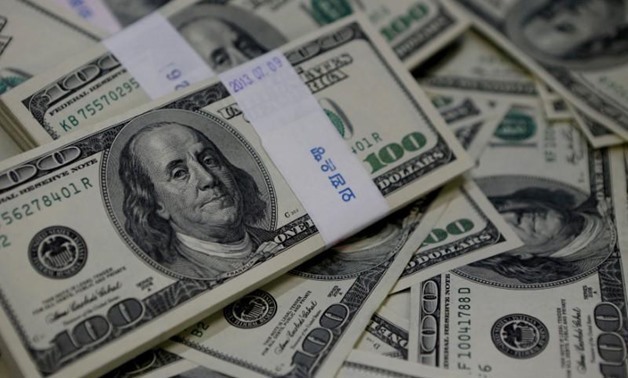
U.S. one-hundred dollar bills are seen in this picture illustration, August 2, 2013 - REUTERS/Kim Hong-Ji/Illustration
LONDON - 14 February 2018: The dollar hit a 15-month low against the yen and fell versus the euro for the fourth consecutive day on Wednesday with investors nervous ahead of key U.S. inflation numbers due later amid a fragile recovery in equity markets.
The dollar, measured against a basket of currencies, has now given up two-thirds of the gains it notched up this month when investors rushed into the greenback as equity markets suffered a violent sell-off.
The euro traded 0.2 percent higher at $1.2370, off the lows of $1.2206 hit on Friday. The dollar index was down 0.1 percent.
Strong German economic numbers for the fourth quarter of 2017 underlined the strength of the euro zone economy.
“People looking for a big bounce in the dollar from the volatility spike must be feeling pretty depressed right now,” said Kit Juckes, chief FX strategist at Societe Generale in London, referring to the dollar’s losses in recent sessions.
He said that even if U.S. inflation numbers come in better than expected they would not lead to a sustained dollar recovery but a short-term gain for the greenback.
“The dollar bulls have a weak hand right now, given where we are after the shake-out. The trouble with inflation numbers up now and further Fed hiking is that it just means a sugar rush before the end of the cycle and an earlier recession,” he said.
Worries about rising inflationary pressures - and the need for central banks to tackle them - sent markets into a tailspin this month.
U.S. January inflation data is due at 1330 GMT, and the numbers could either upset the equity market’s fragile recovery or clear the way for additional gains.
The U.S. currency attracted demand during the global market tumult this month, although it had fallen to a three-year low against a basket of currencies in January.
It remains down 2.7 percent so far this year, weighed by factors including the prospect of the United States pursuing a weak dollar strategy and the greenback enjoying less interest rate advantage.
The yen, which gained as investors sought safety in the currency after Japanese equity markets slid again on Wednesday, was up as much as 0.8 percent to its highest since November 2016 verus the dollar before falling back to trade up 0.4 percent, at 107.34.
Despite the Bank of Japan reiterating that it has no intention of reining in its vast monetary stimulus, some investors are betting the central bank will follow others in slowly tightening.
“However, following such a scenario and driving the yen higher means that the BOJ would be even more determined to stick to an easy policy and prevent the currency from appreciating and shield the domestic stock market,” said Koji Fukaya, president at FPG Securities in Tokyo.
The yen was also up 0.3 percent against the euro at 132.82 yen.
The New Zealand dollar gained 0.5 percent to $0.7308 after a Reserve Bank of New Zealand’s quarterly survey showed business managers forecasting more inflation.
The Australian dollar was 0.2 percent higher at 78.77 cents .

Comments
Leave a Comment